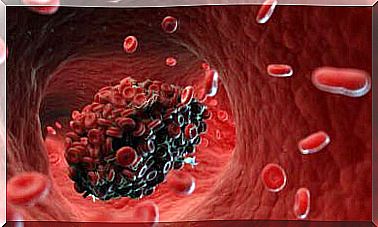Lidocaine: Uses And Side Effects
Lidocaine is an anesthetic drug that belongs to the pharmacological family of aminoamides. This anesthetic drug is widely used in the area of dentistry.
Specifically, it is an amide-type local anesthetic and can be used in the form of an ointment, gel, patch or spray for topical use, as well as an oral solution and injection for local anesthesia.
It has been used as a local anesthetic since 1948, but it was not until 1962 when it was used for the first time with the indication to combat ventricular tachycardia or ventricular fibrillation.
How does lidocaine exert its effect on the body?
As experts indicate, lidocaine is a drug that triggers both anesthetic and antiarrhythmic effects. For this reason, it has a double mechanism of action. Let’s look at each one separately.

Anesthetic effect
These types of drugs owe their effectiveness to their ability to inhibit the generation or transmission of nerve impulses in a reversible way.
To achieve this effect, lidocaine decreases the permeability of the nerve membrane to sodium. This action causes the rate of depolarization of the membrane to decrease and, as a consequence, the threshold for electrical excitability increases.
Ultimately, to trigger its anesthetic action, lidocaine blocks the initiation and propagation of action potentials. In turn, it prevents the increase in sodium conductance by blocking voltage-gated sodium channels.
At the electrophysiological level, the depolarization speed decreases and, therefore, the conduction speed, lengthening the refractory period.
At low doses, it reduces the elevation of the action potential and decreases the firing frequency. When the doses are higher, it prevents the triggering of the action potential, since it physically clogs the pore found in the membrane.
Antiarrhythmic effect

As for antiarrhythmic drugs, they are those that are used in order to suppress or prevent heart rhythm disturbances. In this sense, lidocaine is capable of inhibiting the entry of sodium through the fast channels of the heart cell membrane. In this way, the recovery period after repolarization is increased.
Lidocaine suppresses automatism, which is the ability of the heart to beat automatically, and decreases the refractory period and the duration of the action potential in the His-Purkinje system at low concentrations.
Furthermore, it is capable of suppressing spontaneous depolarizations in the ventricles, hence its effectiveness in the aforementioned indications.
Pharmacokinetics: what happens to lidocaine in the body?
Pharmacokinetics includes the absorption, distribution, metabolism and elimination processes of a drug. In this sense, lidocaine, as we have seen, can be administered by different routes. Depending on the route by which it is administered, the pharmacokinetic values vary.
As for oral administration, although it is hardly used, it presents an almost complete absorption. However, it has a very low bioavailability of 35%. Bioavailability is the percentage of the drug that remains available at the time of carrying out the action in the body after a dose.
On the other hand, when used topically, lidocaine has a duration of action of between 30-60 minutes with peak effects occurring within the first 2.5 minutes.
Local anesthesia begins to occur within 3 minutes of application. Once the patch is removed, the local anesthesia can last up to approximately 40 minutes.
Finally, after an intravenous injection, lidocaine is distributed in two phases. The first represents the distribution of lidocaine in the most perfused tissues. The second phase is slower and the drug is distributed in adipose tissues and skeletal muscle.
The onset of action of intravenous doses is immediate. However, when administered intramuscularly, action begins after 5-15 minutes.
Adverse reactions

Lidocaine, like all drugs on the market, is not exempt from producing a series of adverse effects that must be taken into account. Among the most common, we can mention those related to the central nervous system. Among them are:
- Dizziness
- Nausea and vomiting
- Nervous alterations, such as pictures of anxiety.
In addition, as it also has effects on the heart, when the doses of lidocaine are very high, some of the following unwanted effects may also appear:
- Hypotension
- Heart attack.
- Cardiac arrhythmias.
In conclusion, lidocaine is a drug subject to medical prescription. It has antiarrhythmic and anesthetic effects. It is a drug that at high doses produces serious adverse effects. Therefore, you should always follow the doctor’s instructions and not self-medicate .









